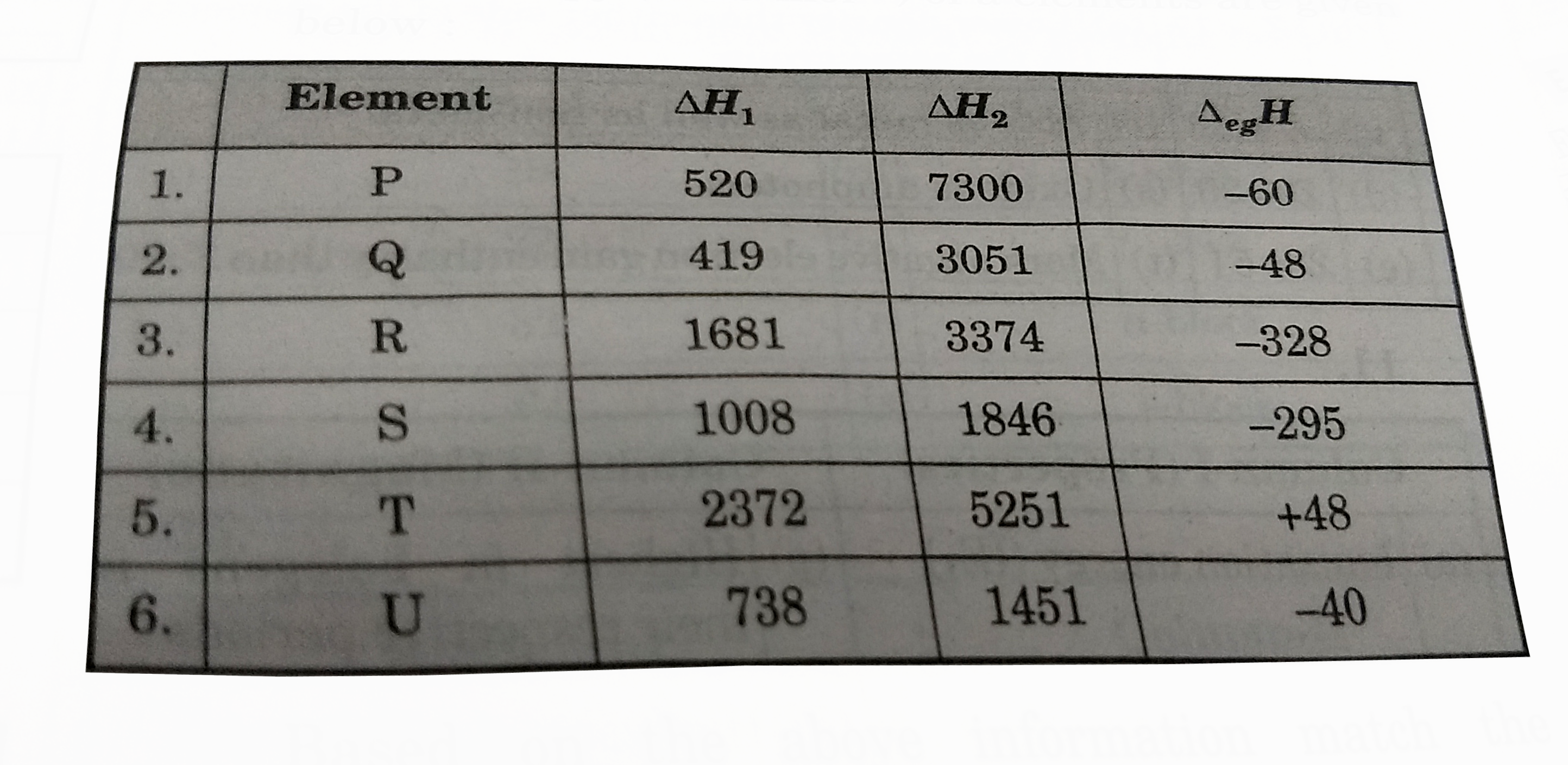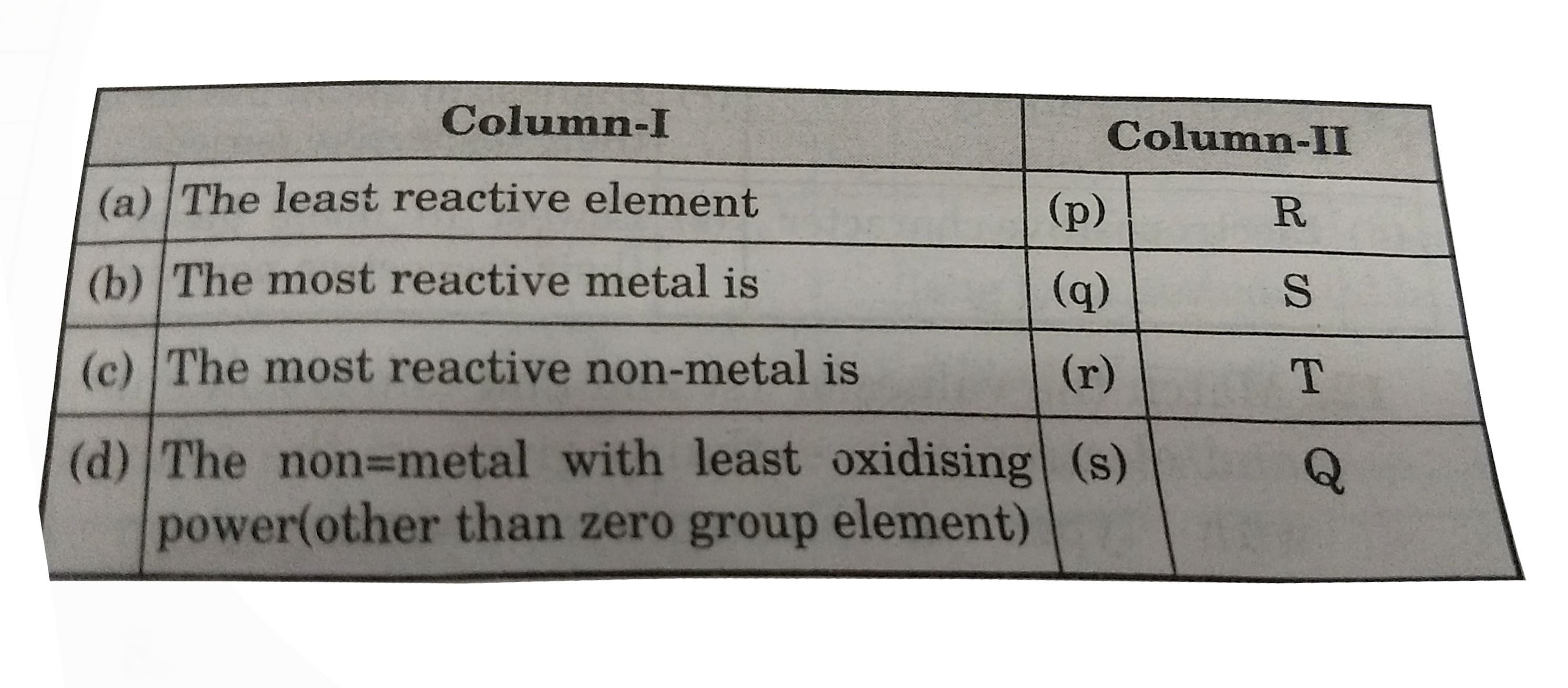Li (520), Be (899) and C(1086)kJmol−1 ionisation enthalpy then B contain which are ionisation enthalpy 800 or 900 kJ/mol why ?
800kJ mol−1 because order of ionisation enthalpy in second period is Li<B<Be<C.
Topper's Solved these Questions
- BOOK - KUMAR PRAKASHANCHAPTER - CLASSIFICATION OF ELEMENTS AND PERIODICITY IN PROPERTIES EXERCISE - Section -C (MCQs from Textual Exercise )8videos
CLASSIFICATION OF ELEMENTS AND PERIODICITY IN PROPERTIES
- BOOK - KUMAR PRAKASHANCHAPTER - CLASSIFICATION OF ELEMENTS AND PERIODICITY IN PROPERTIES EXERCISE - Section -C (MCQs from Darpan.s Exam Oriented )28videos
CLASSIFICATION OF ELEMENTS AND PERIODICITY IN PROPERTIES
- BOOK - KUMAR PRAKASHANCHAPTER - CLASSIFICATION OF ELEMENTS AND PERIODICITY IN PROPERTIES EXERCISE - Section -A75videos
CLASSIFICATION OF ELEMENTS AND PERIODICITY IN PROPERTIES
- BOOK - KUMAR PRAKASHANCHAPTER - CHEMICAL BONDING AND MOLECULAR STRUCTUREEXERCISE - SECTION -D (SOLUTIONS OF NCERT EXEMPLAR PROBLEMS) (LONG ANSWER TYPE QUESTIONS)10videos
CHEMICAL BONDING AND MOLECULAR STRUCTURE
- BOOK - KUMAR PRAKASHANCHAPTER - ENVIRONMENT CHEMISTRY EXERCISE - Question For Module (Section-C)1videos
ENVIRONMENT CHEMISTRY
Similar Questions
The first ionization enthalpy (ΔiH) values of the second period elements Li,Be and C are respectively 520,899 and 1086kJmol−1. Predict whther the first ΔiH value for B will be more close to 690 or 990kJmol−1?
View SolutionThe first ionization enthalpy (ΔiH) values of the second period elements Li,Be and C are respectively 520,899 and 1086kJmol−1. Predict whther the first ΔiH value for B will be more close to 690 or 990kJmol−1?
View Solution
Knowledge Check
- Question 1 - Select One
Ionisation of energy Fɵ is 320kJmol−1. The electronic gain enthalpy of fluorine would be
A−320kJmol−1B−160kJmol−1C+320kJmol−1D+160kJmol−1
Use the following data to calculate ΔlatticeH∘ for NaBr. ΔsubH∘ for sodium metal =108.4kJmol−1, ionization enthalpy of sodium =496kJmol−1., electron gain enthalpy of bromine =−325kJmol−1 bond dissociation enthalpy of bromine =192kJmol−1,ΔfH∘ for NaBr(s)−360kJmol−1.
View SolutionUse the following data to calculate ΔlatticeHΘ for NaBr.ΔSubHΘ for sodium metal =108.4kJmol−1, ionisation enthalpy of sodium =496kJmol−1, electron gain enthalpy of bromine =−325kJmol−1, bond dissociation enthalpy of bromine =192kJmol−1,ΔfHΘ for NaBr(s)=−360.1kJmol−1
View SolutionCalculate the lattice enthalpy of KCl from the following data by Born- Haber's Cycle.
Enthalpy of sublimation of K=89kJmol–1
Enthalpy of dissociation of Cl=244kJmol–1
Ionization enthalpy of potassium = 425kJmol–1
Electron gain enthalpy of chlorine = –355kJmol–1
Enthalpy of formation of KCl=–438kJmol−1View SolutionThe first (ΔH1) and second (ΔH2) ionisation enthalpies (in kJmol−1) and the (ΔHeg) electron gain enthalpy (in kJmol−1) of a elements are given below:

Based on the above information match the following columns.
 View Solution
View SolutionThe first (ΔH1) and second (ΔH2) ionisation enthalpies (in kJmol−1) and the (ΔHeg) electron gain enthalpy (in kJmol−1) of a elements are given below:

Based on the above information match the following columns.
 View Solution
View SolutionThe enthalpy change for first proton neutralisation of H2S is −37.1kJmol−1. What is the enthalpy change for first ionisation of H_(2)S.' in KJ/mol.
View SolutionIonisation of energy Fɵ is 320kJmol−1. The electronic gain enthalpy of fluorine would be
View Solution

